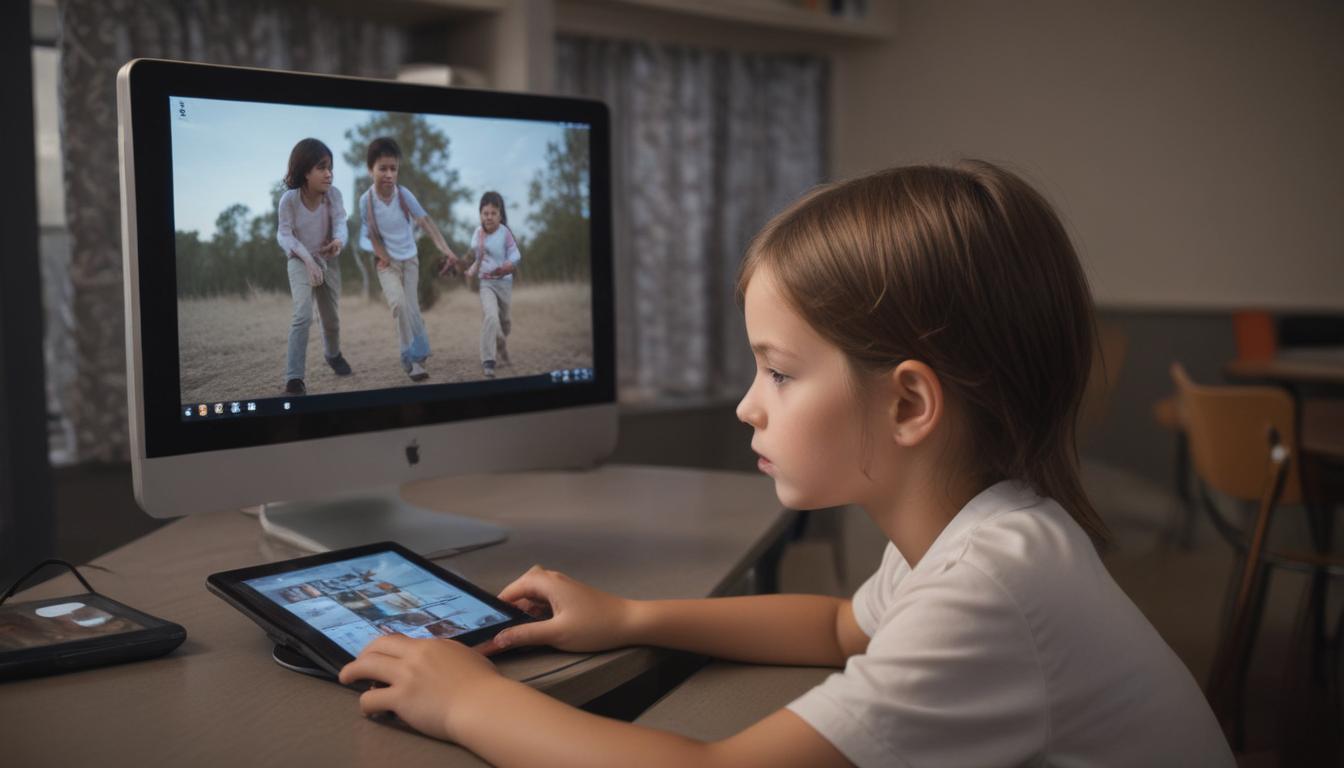Now Reading: How Screen Time Really Affects Learning
- 01
How Screen Time Really Affects Learning
How Screen Time Really Affects Learning

Balancing Screen Time for Better Learning Outcomes
Are you constantly worried about the amount of time your child spends staring at a tablet, phone, or computer? You see the potential for learning, but you also feel a growing unease about its effect on their focus, creativity, and overall development. This conflict between the digital world’s opportunities and its potential pitfalls leaves many parents and educators feeling lost, searching for a clear path forward. It’s a modern parenting dilemma that can feel overwhelming, making you question if you’re making the right choices for your child’s future.
The good news is that the conversation around screen time is shifting. It’s no longer about a simple “good” versus “bad” debate. The solution lies in understanding the nuances of how different types of screen time impact learning and developing a strategy for a healthy, balanced digital life. This guide will empower you to move beyond guilt and anxiety, providing you with the knowledge and actionable steps to harness the benefits of technology while mitigating its risks. You can help your child become a master of their digital world, not a passive consumer.
The Potential Pitfalls of Unchecked Screen Time
When screen time is unregulated and consists mainly of passive consumption, it can pose significant challenges to a developing mind. The primary concern is the displacement of activities crucial for cognitive and physical development. An hour spent scrolling through short-form videos or playing a repetitive game is an hour not spent reading a book, building with blocks, playing outside, or engaging in imaginative play. These traditional activities are fundamental for building foundational skills like problem-solving, spatial awareness, and deep, sustained focus.
Furthermore, much of the content on digital platforms is designed to be hyper-stimulating, delivering constant, small rewards to the brain. This can create a preference for instant gratification, making it more difficult for children to engage in activities that require patience and prolonged mental effort, such as working through a complex math problem or writing a detailed story. The brain can become wired to expect a high level of stimulation, which the real world and traditional classroom settings often cannot provide, leading to perceived boredom and a lack of engagement in non-digital tasks.
Shorter Attention Spans and Reduced Focus
One of the most widely discussed impacts of excessive screen time is its effect on attention. The rapid pace of many apps, games, and videos trains the brain to shift focus quickly from one stimulus to the next. While this might seem like a form of multitasking, it actively works against the development of deep focus—the ability to concentrate on a single task for an extended period without distraction. This skill is the bedrock of academic success, essential for reading comprehension, critical thinking, and absorbing complex information.
This challenge often becomes apparent in the classroom. Educators report that students who engage in high amounts of fast-paced screen time may struggle to listen to a long lecture, read a chapter of a book, or complete a multi-step project without becoming fidgety or disengaged. They are accustomed to a constant stream of new information and entertainment, making the slower, more deliberate process of traditional learning feel difficult and unrewarding. Cultivating the mental stamina for deep focus is a skill that requires practice, and unchecked screen time often practices the opposite.

Unlocking the Educational Power of Screens
Despite the valid concerns, it is crucial to recognize that not all screen time is created equal. When curated and used intentionally, digital devices can be incredibly powerful tools for learning and discovery. The key difference lies in active engagement versus passive consumption. Watching hours of unboxing videos is vastly different from using an interactive app that teaches coding principles, exploring a virtual tour of the solar system, or collaborating on a school project using a digital platform.
Quality educational content can bring subjects to life in ways that traditional resources cannot. A child can watch a documentary that visualizes historical events, use a language app to practice speaking with a native accent, or engage with a math game that makes abstract concepts tangible and fun. These interactive experiences can cater to different learning styles, providing visual, auditory, and kinesthetic feedback that reinforces new knowledge. By guiding children toward these resources, we can transform screen time from a potential distraction into a gateway to a world of information and skill-building.
Creating a Healthy Digital Diet for Your Family
The most effective approach to managing screen time is to think of it like a nutritional diet. Just as we aim for a balance of healthy foods and limit junk food, we should strive for a balance of quality, educational screen time and limit mindless, passive entertainment. This “digital diet” isn’t about complete prohibition, which can be unrealistic and counterproductive in our tech-driven world. Instead, it’s about teaching moderation, mindfulness, and making conscious choices about the content we consume.
This approach empowers children to become critical thinkers about their own technology use. The goal is to cultivate self-regulation skills so that they learn to recognize when screen time is beneficial and when it’s time to unplug and engage with the world around them. Establishing a healthy digital diet involves setting clear expectations, creating a family media plan, and having ongoing conversations about the role technology plays in your lives. It’s about integrating technology in a way that serves your family’s values and goals, rather than allowing it to dictate them.
Prioritize Quality and Co-Viewing
The cornerstone of a healthy digital diet is prioritizing high-quality content. Before handing over a device, investigate the app or show. Look for content that encourages problem-solving, creativity, and critical thinking rather than just rote memorization or reaction. Great educational content is often open-ended, allowing for exploration and discovery. Read reviews from educators and other parents, and test things out yourself to ensure they align with your learning goals for your child.
Equally important is the practice of co-viewing or co-playing. Whenever possible, engage with the screen alongside your child. This transforms a potentially isolating activity into a shared, connected experience. You can ask questions about what they are learning, help them through challenges, and connect their digital experiences to real-world concepts. Discussing the content you consume together is also a perfect opportunity to teach digital literacy, such as identifying advertisements or questioning the reliability of information, turning entertainment into a valuable teachable moment.


































